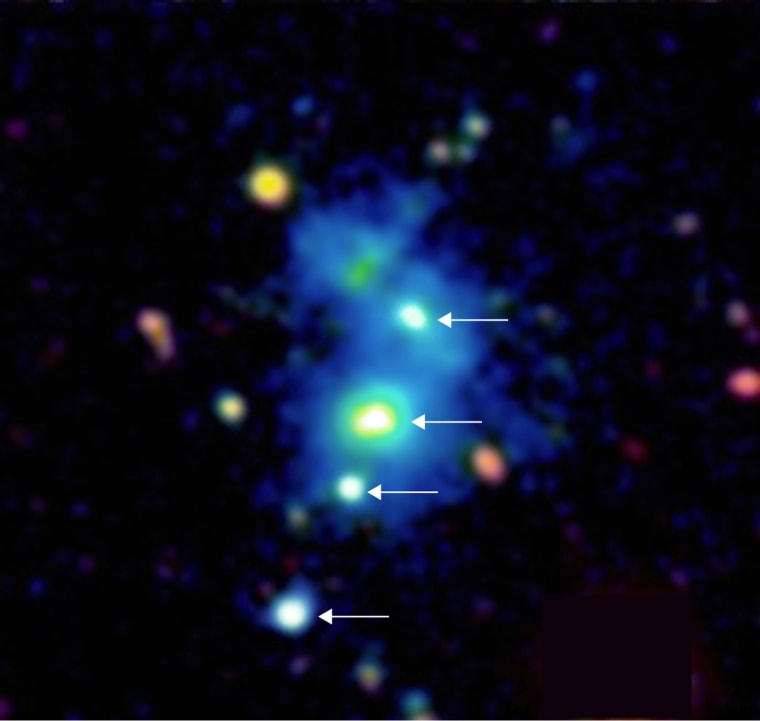A giant nebula in the early universe hits the jackpot when it comes to rare, bright objects known as quasars, boasting four within surprisingly close proximity to one another. The first known quasar quartet lies in a cloud of cool gas that could provide a clue to the objects' unusual closeness.
"Multiple-quasar systems are rare, because quasars themselves are rare," Joseph Hennawi, of the Max Planck Institute for Astronomy in Germany, told Space.com by email.
"The typical distance between any two quasars is about 100 million light-years, whereas we found four quasars within 700,000 light-years of each other," he said. "The … probability of that occurring is extremely small — about 1 in 10 million odds." [The Strangest Things in Space]

The center of every galaxy boasts a supermassive black hole millions of times the mass of the sun. Material swirling around the rim of the black hole travels near the speed of light, emitting an enormous amount of energy before it is consumed. If the supply is large enough, it enters the quasar phase of its evolution, far outshining its parent galaxy to become one of the brightest objects in the universe.
But the lives of quasars are extremely brief; according to Hennawi, a quasar shines somewhere between 10 million to 100 million years in the 10-billion-year lifetime of a galaxy. This makes the objects extremely rare and hard to find. Discovering four so close together came as something of a shock.
Hennawi and his colleagues were studying 29 quasars in search of a nebula of cool hydrogen gas, known as Lyman-α (Lyman-alpha) nebulae, surrounding them. The bright light of a quasar can illuminate the gas around it, helping astronomers to better understand the properties of the gas.
Selecting one likely candidate, the team trained a Keck telescope in Hawaii on the object, and found one of the largest and brightest Lyman-α nebulae yet discovered. Inside the cloud of gas, the researchers identified not one but four tightly packed quasars, all lying surprisingly close together.
Nearly 500,000 quasars have been identified so far, but scientists know of only about a hundred binary quasars. Two triple quasar systems have been foundsince 2007. This, however, is the first known quadruple-quasar system.
The research was published online Thursday (May 14) in the journal Science.
This is a condensed version of a report from Space.com. Read the full report. Follow Space.com @Spacedotcom, Facebook and Google+.